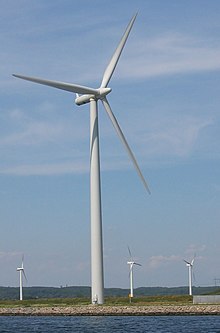Definition and Purpose of Carbon Offsets and Credits
– Carbon offsets and credits are a way to compensate for emissions of greenhouse gases.
– They represent a reduction or removal of emissions to offset emissions made elsewhere.
– Carbon credits are transferrable financial instruments certified by governments or independent bodies.
– They are measured in tonnes of carbon dioxide-equivalent (CO2e).
– Carbon offsets and credits are part of national and international efforts to mitigate greenhouse gas emissions.
Types of Greenhouse Gas Reduction Projects
– Forestry projects, such as improved forestry management, are a growing category of carbon offsets and credits.
– Renewable energy projects, like wind farms and biomass energy, are common types.
– Energy efficiency projects, such as efficient cookstoves, contribute to carbon offsets and credits.
– Landfill methane destruction is another type of project.
– Negative emission technologies like biochar and geologically stored carbon are also used.
Role of Carbon Offsets and Credits in Meeting Climate Goals
– Carbon offsets and credits can help countries meet their NDC commitments and achieve the goals of the Paris Agreement.
– They provide a lower-cost option for reducing greenhouse gas emissions.
– Offset and credit programs allow for carbon reduction schemes between trading partners globally.
– Demand for carbon offsets arises from individuals, companies, organizations, and sub-national governments.
– Certification programs provide guidelines and requirements for producing carbon offsets.
Criticisms and Due Diligence Actions
– Media reports have criticized carbon offset and credit programs for exaggerated or misleading claims.
– Organizations can take due diligence actions to ensure the quality and environmental benefits of offsets.
– Identifying good quality offsets is an important step.
– Avoiding reputational risk associated with poor quality offsets is a consideration.
– Certification organizations provide guidance on appropriate terms for buyers of offsets and credits.
Origins and General Features
– The US Clean Air Act and Acid Rain Trading Program were early examples of tradable emission offset mechanisms.
– Regulatory frameworks for the US Clean Water Act enabled wetlands offsetting, setting a precedent for carbon offsetting.
– The Clean Development Mechanism, established under the Kyoto Protocol, expanded carbon emissions trading globally.
– Carbon offsets and credits focus on major greenhouse gases like carbon dioxide, methane, and nitrous oxide.
– Common features include vintage, project type, co-benefits, certification regime, and carbon retirement. Source: https://en.wikipedia.org/wiki/Carbon_offset
Carbon offsetting is a trading mechanism that allows entities such as governments, individuals, or businesses to compensate for (i.e. “offset”) their greenhouse gas emissions by supporting projects that reduce, avoid, or remove emissions elsewhere. A carbon credit or offset credit is a transferable financial instrument, that is a derivative of an underlying commodity. It can be bought or sold after certification by a government or independent certification body. When an entity invests in a carbon offsetting program, it receives carbon credits, i.e "tokens" used to account for net climate benefits from one entity to another. One carbon offset or credit represents a reduction, avoidance or removal of one tonne of carbon dioxide or its carbon dioxide-equivalent (CO2e). Offset projects that take place in the future can be considered to be a type of promissory note: The purchaser of the offset credit pays carbon market rates for the credits and in turn receives a promise that the purchaser's greenhouse emissions generated in the present (e.g. a roundtrip flight to London) will be offset by elimination of an equal amount at some point in the future (e.g. 10 to 20 years for planting 110 seedlings). Offsets that were generated in the past are credible only if they were in addition to reductions that would have happened anyway.

A variety of greenhouse gas reduction projects can be used to create offsets and credits. These include forestry projects (avoidance of logging, sapling planting, etc.), renewable energy projects (wind farms, biomass energy, biogas digesters, hydroelectric dams, etc.), energy efficiency projects (more efficient cooking stoves, etc.), negative emission/carbon capture technologies (biochar, carbonated building elements, geologically stored carbon, etc.) and the elimination of methane emissions in various settings such as landfills.
Carbon offset and credit programs provide a mechanism for countries to meet their Nationally Determined Contributions (NDC) commitments to achieve the goals of the Paris Agreement. Article 6 of the Paris Agreement includes three mechanisms for “voluntary cooperation” between countries towards climate goals, including carbon markets. Article 6.2 enables countries to directly trade carbon credits and other units such as gigawatts (GW) of renewable power with each other, and referred to this as Internationally Transferred Mitigation Outcomes (ITMOs). Article 6.4 established a new international carbon market allowing countries or companies to use carbon credits generated in other countries to help meet their climate targets.
Carbon offset and credit programs are coming under increased scientific and media scrutiny because their claimed emissions reductions may be inflated compared to the actual reductions achieved. To be credible, the reduction in emissions must (1) last indefinitely (e.g. the newly planted forest must not be logged or susceptible to wildfires), (2) be additional to emission reductions that were going to happen anyway, and (3) be measured and monitored to assure the that the amount of reduction promised has in fact been attained.
